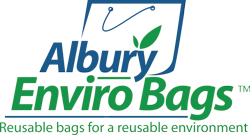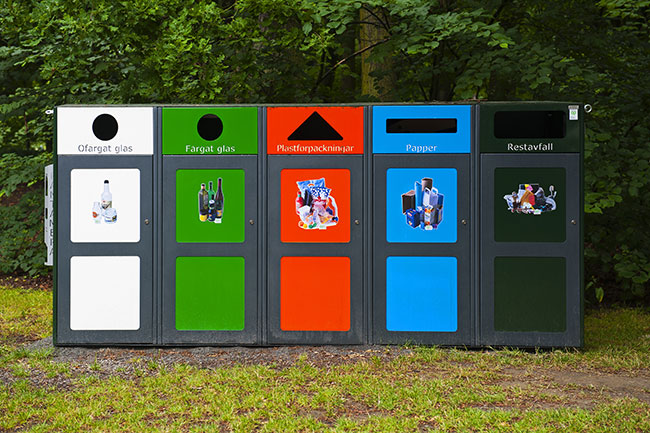Garbage is accumulating at an alarming rate around the world. This creates a serious waste management problem, both in industrialised and underdeveloped countries – a problem that also has serious environmental consequences.
A 2014 study in the journal of Environmental Science and Technology claimed that no less than 40 percent of the world’s garbage is burnt, often in open pits. This practice causes serious air pollution with harmful substances like mercury and lead released into the air. An additional problem is that nobody wants a rubbish tip in their neighbourhood, because of the pollution and odour it produces.
Apart from burning, waste is dumped as landfill at designated rubbish tips. This again is not an environmentally sound practice. Methane gas is trapped in rotting garbage and toxic chemicals from household cleaning products leak into the underlying groundwater. Rubbish tips are also breeding grounds for vermin.
An environmentally friendly solution to waste disposal is an ongoing debate in the U.S., EU, Australia and New Zealand. Regulations and commercial interests often stand in the way of progress.
The shining exception is Sweden, a Scandinavian country with a population of 9.5 million people. Recycling, sorting, and low-emission incineration means that less than one percent of Swedish garbage ends up in a rubbish tip.
The Swedish solution to waste disposal
The groundwork for household recycling in Sweden goes back several decades. Starting in the 1970s, strict regulations were introduced for handling waste, both for households and companies. As a result, Swedish households have accepted and adopted recycling as a daily household chore.
Paper, bottles, plastic, food remnants, tins and jars, metal, electric appliances, light bulbs and batteries are carefully sorted and placed in separate bins which are placed at convenient locations in all neighbourhoods.
Companies and industrial organisations are encouraged to make more durable products and eliminate toxic substances from their production processes.
Recycling processes in Sweden have evolved as households and companies have accepted the need to sort their rubbish and deposit it in specially labelled containers.
Today, 99% of household waste is recycled. This is an increase from 96% in 2012, and just 38% in 1975.
- Newspapers and magazines are converted to paper mass.
- Bottles are either recycled or melted and used to make new items.
- Food remnants are composted into soil or passed through chemical processes to produce biogas.
- Plastic containers are turned into plastic raw material.
- Specially fitted rubbish trucks pick up electronic waste and hazardous chemicals.
- Recycling centres accept waste such as discarded TVs and broken furniture.
Incineration is still required for waste items that cannot be recycled or converted to raw materials. It is in this area that Sweden has excelled. Not only have toxic emissions been reduced to miniscule amounts, but the incinerators also convert heat to energy.
32 Waste-to-Energy (WTE) plants have been constructed – the first one, in Stockholm, built in 1904. Recycling processes and incineration now function as an efficient waste management system that dramatically reduces the amount of waste that is placed in rubbish tips as landfill.
Garbage is loaded into the incineration furnaces which generate steam. The steam drives turbines which produce electricity. This is then fed to transmission lines, which feed the country’s electricity grid.
Incinerators produce toxic emissions and pollute the air, but Sweden has solved this problem with modern technology. The smoke emitted from the incinerator stacks is made up of 99.9% non-toxic carbon dioxide and water, and is filtered through dry filters and water.
The incinerator process produces byproducts such as ash, which contains dioxins, a chemical contaminant. These byproducts are cleaned up using flue-gas cleaning and only a tiny amount of dioxins reach the atmosphere. The ash itself is sorted into its constituent parts and disposed, a very small amount as landfill.
The WTE plants incinerate more than two million tonnes of garbage per year. The conversion to energy provides more than a million homes with heating and a quarter of a million homes with electricity.
The average Swedish household produces about 461 kg of waste per year. This is slightly below the average for other European countries.
This amount is below the capacity of the Waste-to-Energy incinerator network. This places Sweden in a unique position worldwide; Sweden wants more garbage to burn and convert to energy and heating.
Waste management as an import business
Sweden imports some 700,000 tonnes of waste from countries like Norway, the United Kingdom, Italy and Ireland. Norway pays Sweden to incinerate some 80,000 tonnes of waste per year and the residue of the incineration is returned to Norway.
Sweden has made garbage a commodity. Because of taxes and bans on landfill waste in a number of European countries, their best solution is to ship the waste to Sweden for incineration in their over-capacity WTE plant network.
Many countries would do well to copy the Swedish model for waste management. This is particularly so because the amount of waste worldwide is increasing year-by-year, and open fire incineration and landfill cause serious environmental concerns.
When it comes to recycling, every little bit counts. Our bags made from recycled materialsare a great way to show your support for recycling initiatives, and are far kinder to our environment than the common plastic bags used in shopping malls.





